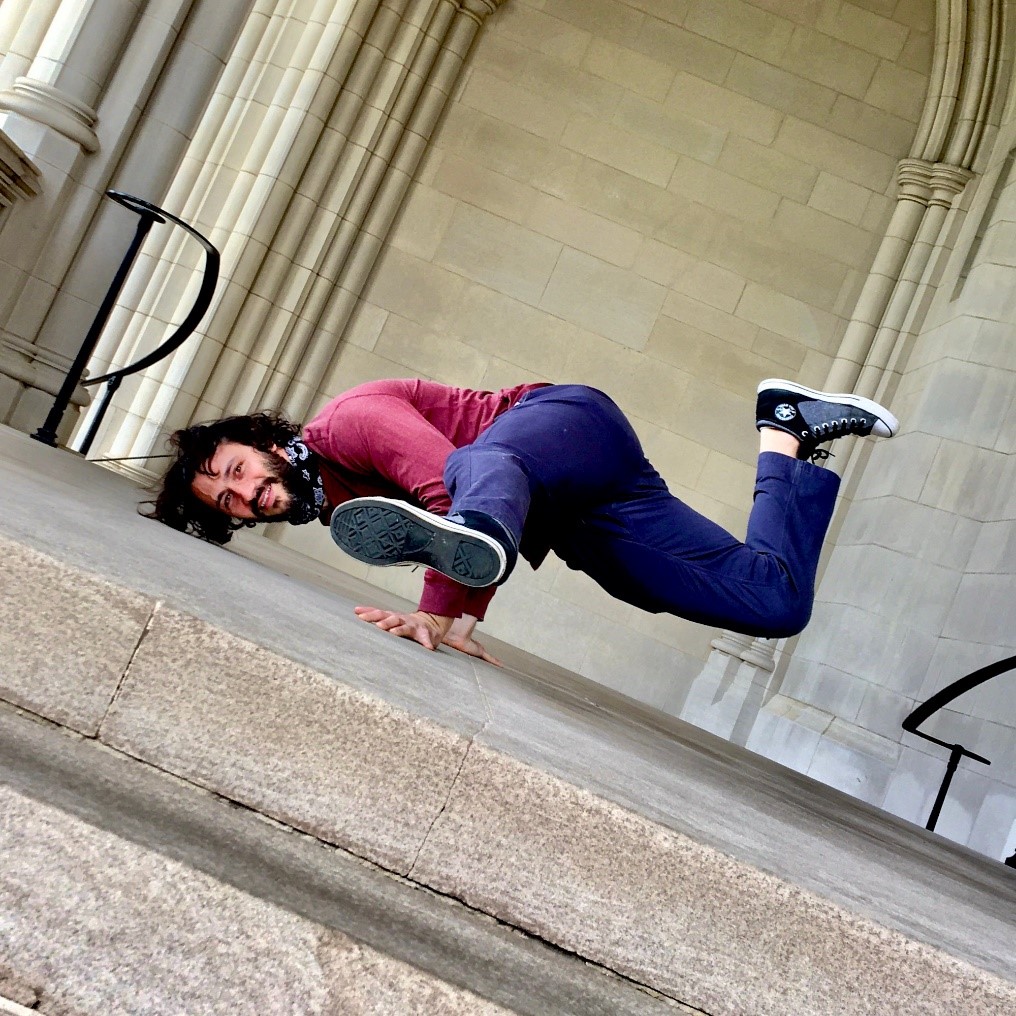Mason Quick has always been science oriented. When he learned in elementary school that the sun was a star, he was hooked. As he grew older, he was drawn to astronomy, but later changed his mind. "I saw astronomy as the final frontier, but then I realized I couldn’t personally experience it, and I wanted to study something more tangible," he explains.
After pursuing astronomy as an undergraduate, he earned a doctorate in Atmospheric Sciences from the University of Arizona in 2014. Ironically, he now specializes in something less than tangible: lightning. This 36-year-old atmospheric physicist holds a research scientist position at Marshall, where he manages lightning sensor systems, designs new sensor technology, and analyzes lightning data.
Mason is also an athlete. "I used to play rugby and soccer," Mason explains, "and now I play capoeira, an Afro-Brazilian martial art that's a mix of kicks, fluid movements, and inversions with elements of music and dance. I learned it in Arizona, and we have a group here in Huntsville too."
And add musician to his talents. "I played trumpet in 8th grade," he says. "One day I picked up a digeridoo, an Australian aborigine instrument, and found I could play it too."
He admits that he thrives on variety and has this to say about conformity: "I believe in being yourself. You don't have to conform to the norm." Mason says he needs to work on improving "so many things" in himself and notes that "time management and focus" are most prominent among them.
He is currently designing a new high-resolution lightning imager -- the CubeSat Lightning Imaging and Detection Experiment (CLIDE). "It detects not only the bright flashes, but also the small, faint lightning flashes that hold vital clues to better understanding and monitoring extreme weather," he explains. He wants to "see whether we can push the technology forward, expand applications of lightning science, and keep progressing into new domains like lightning on other planets."
In the past, he led the development of the Fly’s Eye GLM Simulator, a multi-spectral array of radiometers for studying the optical emission from lightning. He recently upgraded that sensor for a July 23 flight campaign to observe terrestrial gamma ray flashes (TGFs) and study their optical, electric field, and high energy particle emissions. Although TGFs are quite brief (1-2 milliseconds), they appear to be the most energetic events on Earth. They belch destructive gamma-rays packing over ten million times the energy of visible light photons – enough punch to penetrate several inches of lead.
Asked what he is most proud of, Mason answers, "I don’t carry a lot of pride. I owe a lot to having several great mentors: my parents especially, and also some great teachers, coaches, and grad school advisors. And I realize there is so much more to do. But I guess I am proud that I can build high quality cornhole boards!"
